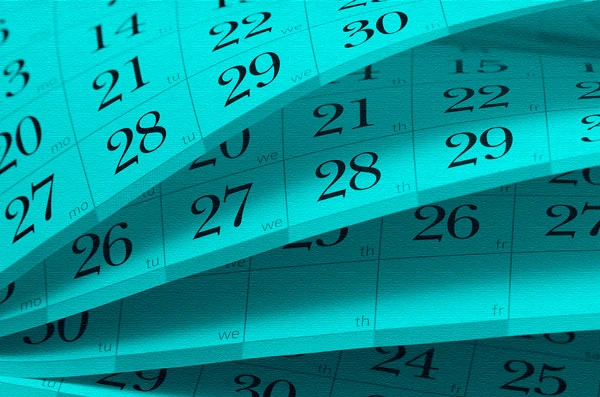Public Policy Review

One of my columns each year is devoted to Water Resources Research Center activities as I highlight some of my recent and ongoing projects. Contrary to what some people think, professors do not take long summer vacations. Summer time is work time, with more time available to work on projects!
In collaboration with Cochise County, some University of Arizona colleagues and I are beginning a project to develop an estimate of water use by owners of domestic wells. Jurisdictions need to understand how water demand increases with population growth. We hope our study methodology, which involves voluntary metering of a population sample, can be applied to other communities deciding to undertake a similar study. The identity of individual water users will be kept confidential. TRIF Water Sustainability Program funding is partially supporting this effort, which will take 18 to 24 months to complete.
I am also currently working with a Northern Arizona University colleague to examine the evolution and effectiveness of the regulatory programs included within the Active Management Area Plans. The Arizona Department of Water Resources, which will soon be developing its Fourth Management Plan for each of the five AMAs, and the Arizona Water Institute are funding the study. My research assistant and I will be conducting stakeholder interviews this summer.
An ongoing project has been examining environmental restoration and enhancement projects in Arizona, focusing on their water requirements. With Bureau of Reclamation funding and graduate student assistance, a survey study of 30 Arizona projects was finalized last summer. A graduate student, who recently graduated from the UA planing program, and I are now completing a related Reclamation-funded study.
We have developed a conceptual mechanism whereby water customers pay for conserved water, with the money being directed into a special fund to be used for purchasing water for environmental purposes. This water conservation banking mechanism, although challenging to implement, deserves consideration by communities interested in finding resources to pay for environmental water needs. The survey study is currently being condensed for publication in the WRRC Arroyo newsletter series. An undergraduate student, whose career objective is to be a science writer, is assisting me with the Arroyo publication.
In collaboration with the UA’s Engineering Research Center for Environmentally Benign Semiconductor Manufacturing, a research assistant and I are working on a paper examining high-tech manufacturing water use in Arizona. The desire for more well-paying jobs in Arizona makes it important to understand how the water needs of this segment of the manufacturing sector can be accommodated. Another graduate student is assisting me in a study that characterizes participation in groundwater savings recharge in Arizona. Also, a paper I co-authored with three attorneys on the Central Arizona Groundwater Replenishment District has been published in a special issue of the Arizona Law Review. (Please contact me if you want a copy of the paper.)
Not all my work is focused on papers and studies. Our annual WRRC conference is always a challenging endeavor, with much effort devoted to developing the program, gaining sponsor support and delivering an informative and engaging event. This newsletter’s insert is devoted to our recent, successful conference on water quality regulation. I have begun to develop the program and format for the 2008 conference, which will be a collaborate effort with Central Arizona Project, focusing on Colorado River/CAP water issues.
izona Project, focusing on Colorado River/CAP water issues. Also, in collaboration with ADWR, the Pima Association of Governments, and the Southern Arizona Leadership Council, we are developing a program called “A Community Conversation on Water.” Scheduled for October 26, 2007 in Tucson, this forum will discuss up-to-date water information, as well as multiple perspectives on water challenges facing the Tucson region. I am an advocate for having people “on the same page” in understanding our water demand and supply situation and our position relative to achieving Tucson AMA’s safe-yield goal. Program and registration information will be available in the not-too-distant future.
I recently made a presentation on the recently authorized US Transboundary Aquifer Assessment Program (the subject of my Jan.- Feb. column) to the newly formed Arizona-Mexico Commission water committee. We are hoping that, with broad support, we will be able to obtain federal funding for this program. Stage one of this collaborative process involves developing study plans and priorities for the two Arizona transboundary aquifers specified in the authorizing legislation, the Santa Cruz Valley aquifers and the San Pedro aquifers.
I would be remiss not to mention our efforts to complete the Layperson’s Guide to Arizona Water, a collaborative undertaking with the Water Education Foundation. My staff has worked hard on the project, with external stakeholders reviewing the work. I look forward to a final draft and a completion of the project.
You may have noticed some commonalities to these sampling of projects. First, most involve significant contributions by research assistants. Interaction with students on projects is a rewarding experience for both me and them. It provides me the opportunity to work with excellent students, both undergraduate and graduate, and they gain work experience. Second, the projects involve collaborations. Through collaboration, more funding is available to employ students, and the work efforts benefit by involving the talents and perspectives of others.
Also, notice the real-world relevance of these efforts, evidence that we at the WRRC are on task with furthering our mission. We are striving to promote an understanding of critical state and regional water management and policy issues through research, community outreach and public education.

